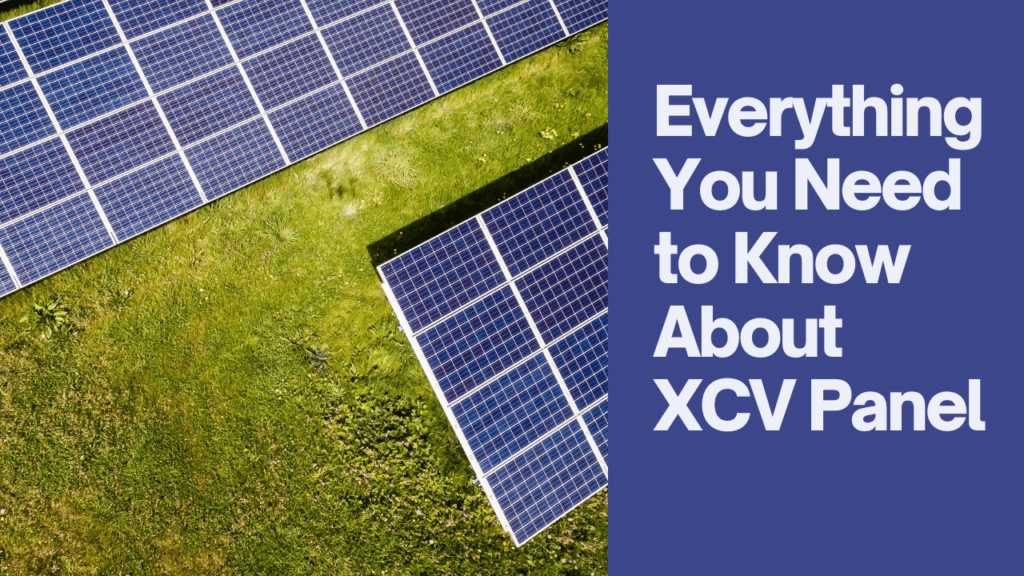XCV Panels are a revolutionary sustainable energy solution that incorporates advanced technology to generate maximum energy with minimal environmental impact. This article provides an in-depth overview of XCV Panels, including their history, functionality, benefits, applications, and other pertinent information.
History of XCV Panel Development
The journey of XCV Panels began with the growing need for efficient and eco-friendly energy sources. Over the years, researchers and engineers have worked tirelessly to refine the technology, making it more accessible and cost-effective for widespread adoption.
How XCV Panels Work?
XCV Panels utilize innovative mechanisms to convert solar energy into usable electricity. Through a combination of photovoltaic cells and advanced electronics, these panels optimize energy production even in varying light conditions, ensuring consistent performance.
Advantages of XCV Panels
One of the primary advantages of XCV Panels is their exceptional efficiency, allowing for maximum energy output. Additionally, their eco-friendly nature makes them a sustainable choice for powering homes, businesses, and even entire communities.
Applications of XCV Panels
From residential rooftops to large-scale solar farms, XCV Panels find diverse applications across various sectors. They can be integrated seamlessly into building designs, providing both aesthetic appeal and functional benefits.
Environmental Impact of XCV Panels
XCV Panels play a crucial role in reducing carbon emissions and mitigating climate change. By harnessing clean, renewable energy from the sun, these panels help decrease reliance on fossil fuels and minimize environmental degradation.
Innovations in XCV Panel Technology
Ongoing research and development continue to drive innovations in XCV Panel technology. From enhanced efficiency to improved durability, these advancements pave the way for a more sustainable energy future.
XCV Panel Manufacturing Process
The manufacturing process of XCV Panels involves precise engineering and quality control measures to ensure optimal performance and longevity. Companies invest in state-of-the-art facilities and sustainable practices to produce high-quality panels efficiently.
Cost Considerations of XCV Panels
While initial investments in XCV Panels may seem significant, their long-term benefits outweigh the costs. With advancements in technology and economies of scale, the cost of solar energy continues to decline, making it an increasingly viable option for consumers and businesses alike.
XCV Panel Performance Metrics
Various performance metrics, such as efficiency ratings and output stability, gauge the effectiveness of XCV Panels. Continuous monitoring and optimization help maintain peak performance and maximize energy generation over time.
Integration of XCV Panels into Building Design
Architects and designers are increasingly incorporating XCV Panels into building designs to enhance sustainability and energy efficiency. Integrated seamlessly into facades, roofs, and other architectural elements, these panels blend functionality with aesthetic appeal.
Challenges and Limitations of XCV Panels
Despite their numerous benefits, XCV Panels face challenges such as intermittency of sunlight and land use considerations for large-scale installations. Addressing these challenges requires ongoing research and collaborative efforts within the industry.
Maintenance and Care of XCV Panels
Regular maintenance and cleaning are essential to ensure the optimal performance and longevity of XCV Panels. Routine inspections and timely repairs help prevent issues and maximize energy production.
XCV Panels in Renewable Energy Systems
XCV Panels play a pivotal role in renewable energy systems, complementing other sources such as wind and hydroelectric power. Their versatility and scalability make them an integral component of the transition towards a sustainable energy future.
Economic Impact of XCV Panel Adoption
The widespread adoption of XCV Panels has significant economic implications, creating jobs, stimulating innovation, and reducing energy costs for consumers. Governments and businesses recognize the economic benefits of investing in renewable energy infrastructure.
Regulatory and Policy Landscape for XCV Panels
Regulatory frameworks and policies play a crucial role in promoting the adoption of XCV Panels. Incentives such as tax credits and feed-in tariffs encourage investment in solar energy, driving market growth and expansion.
Public Perception and Awareness of XCV Panels
Public awareness and perception of XCV Panels influence their adoption and acceptance. Education campaigns and outreach efforts are essential for dispelling myths and highlighting the benefits of solar energy.
XCV Panel Case Studies
Numerous case studies demonstrate the effectiveness and versatility of XCV Panels in real-world applications. From residential installations to utility-scale projects, these case studies showcase the transformative potential of solar energy.
Future Outlook for XCV Panels
The future of XCV Panels is promising, with continued advancements in technology and increasing global demand for clean energy solutions. As solar power becomes more accessible and affordable, XCV Panels will play a vital role in shaping a sustainable future.
The Promise of XCV Panels
XCV Panels represent a beacon of hope in the fight against climate change and energy insecurity. With their unparalleled efficiency, environmental benefits, and economic advantages, XCV Panels hold the promise of a brighter, cleaner, and more sustainable tomorrow.
